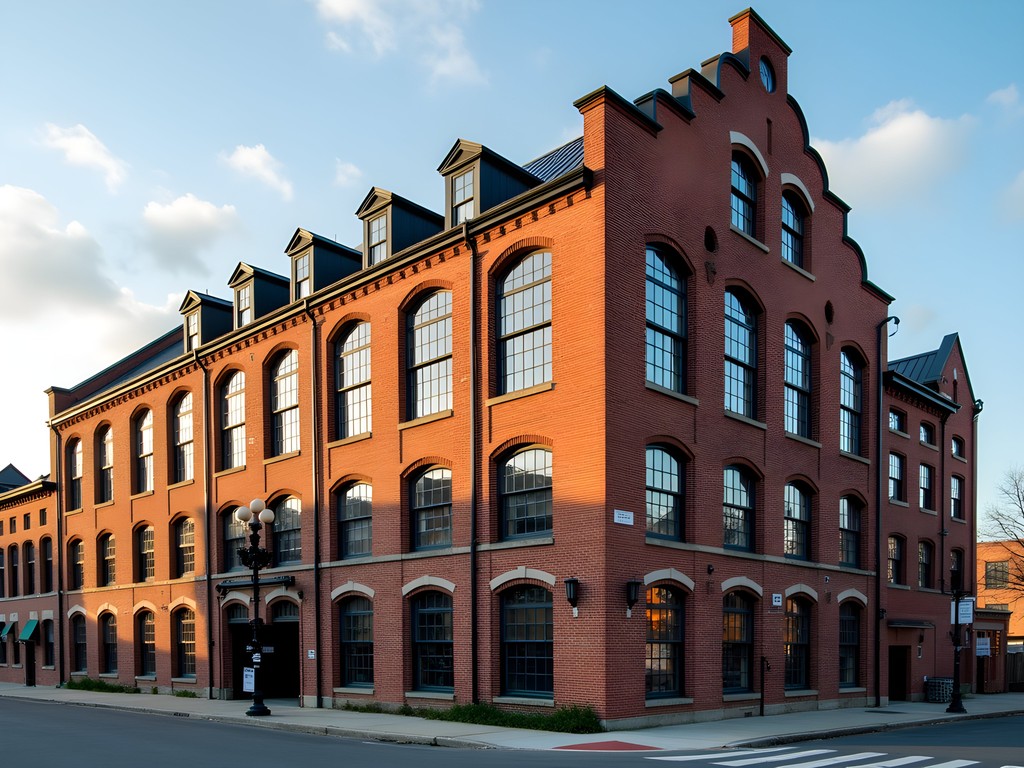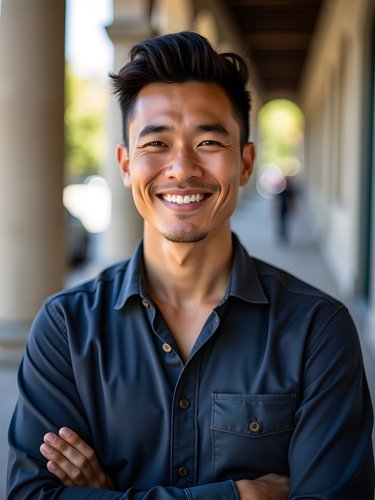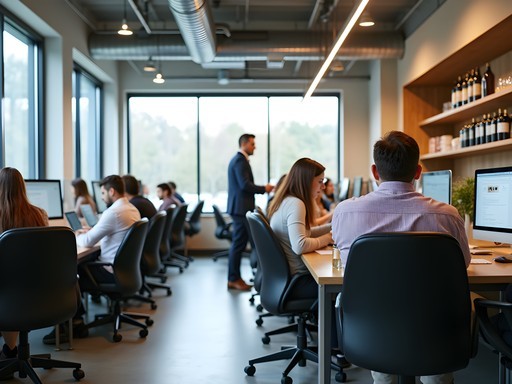Disclosure: This article contains affiliate links. We may earn a commission from purchases at no extra cost to you, which helps our travel content.
As someone who finds beauty in the mathematical precision of historical architecture, Brockton's Industrial Heritage Trail presents a fascinating numerical narrative of America's manufacturing evolution. This compact 4.7-mile trail chronicles the transformation of a small New England settlement into the world's largest shoe manufacturing center—a perfect weekend excursion for students seeking tangible connections to Industrial Revolution concepts beyond textbooks. The trail's 24 historical sites create a walkable algorithm of innovation, perseverance, and socioeconomic change that shaped not just Massachusetts, but America's industrial identity.
The Numerical Narrative of Shoe City
Brockton's transformation from agricultural community to 'Shoe City' presents a fascinating case study in exponential growth. In 1840, the town produced approximately 100,000 pairs of shoes annually. By 1865, that figure had jumped to 1.3 million, and by 1900, an astonishing 45 million pairs—representing a growth rate that would make any data analyst take notice.
The Heritage Trail begins at the Brockton Historical Society, where a collection of vintage manufacturing equipment demonstrates the evolution of production efficiency. I was particularly struck by the mathematical precision of the McKay stitching machine, which increased production capacity by 500% in the 1860s—a technological disruption as significant as any we've witnessed in Silicon Valley.
As an actuary, I couldn't help calculating that a modern factory worker produces in 30 minutes what would have taken a full day in 1850. This efficiency revolution is tangibly presented through the trail's chronological layout, making abstract economic concepts concrete for students.

💡 Pro Tips
- Download the free audio guide from the Historical Society website for detailed manufacturing statistics at each stop
- Visit on weekdays when local historians often give impromptu talks
- Bring a notebook to sketch the geometric patterns in the factory windows—they're mathematically fascinating
Architectural Mathematics: Factory Design Evolution
What truly captivates me about Brockton's industrial architecture is how factory design evolved following mathematical principles of efficiency and light optimization. The progression from small workshops to the massive Douglas Factory (Stop #7 on the trail) illustrates how industrialists intuitively applied calculus concepts to maximize production flow.
The Douglas Factory's sawtooth roof design—with north-facing windows precisely angled at 65 degrees—created consistent, shadow-free natural lighting that reduced eye strain and increased production quality. This architectural innovation spread throughout New England's industrial landscape, creating a distinctive regional aesthetic born of practical mathematics.
I spent nearly an hour photographing the geometric patterns formed by these windows, which create fascinating light distributions throughout the day. For students studying physics or engineering, these buildings are textbook examples of applied mathematics in architectural design.
For comfortable exploration, I recommend wearing a pair of supportive walking shoes as you'll be covering significant ground. The trail's urban terrain makes comfortable footwear essential for fully appreciating these architectural marvels.

💡 Pro Tips
- Visit between 10am-2pm when the sawtooth roof lighting effects are most dramatic
- Look for the golden ratio proportions in the W.L. Douglas Factory windows
- Compare the ventilation systems across different era factories to see the evolution of environmental engineering
Data Points in Time: The Human Stories
While architecture and production statistics fascinate me professionally, the Heritage Trail excels at humanizing these data points through stories of innovation and labor. Stop #12 features the Edison Power Plant, where Brockton became the first city with a three-wire underground electrical system and the first with electrically powered streetcars—technological disruptions that parallel today's digital transformations.
The trail doesn't sanitize history, either. At Stop #15, the Labor Union Memorial commemorates the strikes of 1933, where statistical analysis of wage data and working conditions provides insight into labor economics that students will find relevant to modern discussions about worker rights.
During my visit, I used the pocket voice recorder to capture the excellent narration provided by local guides. This proved invaluable for reviewing the wealth of statistical information later while organizing my photographs.
For students researching specific aspects of industrial history, I recommend bringing a portable document scanner to digitize the wealth of primary source documents available at several stops. The historical society allows scanning of most non-fragile materials, providing valuable research assets.

💡 Pro Tips
- Visit the Keith Block (Stop #9) where innovative entrepreneurs received microloans—a 19th century version of venture capital
- Compare worker demographic data across different factories to understand immigration patterns
- Calculate the productivity-to-wage ratios posted at the Labor Union Memorial for insights into historical labor economics
Budget-Friendly Educational Resources
What makes Brockton's Heritage Trail particularly valuable for student groups is its accessibility. The entire experience can be completed for under $15 per person, including the optional $5 donation to the Historical Society and a $9 guided tour package that includes printed materials.
The trail's digital resources are equally impressive. I downloaded the free Heritage Trail app, which overlays historical photographs onto current viewpoints using augmented reality—allowing you to visualize the bustling factory scenes that once dominated these streets. The app includes detailed production statistics and worker demographic data that economics and sociology students will find particularly valuable.
For recording observations throughout your visit, I recommend the weatherproof notebook which proved invaluable during my rainy second day exploring the trail. Unlike typical notebooks that would have disintegrated in the New England drizzle, this allowed me to continue documenting architectural measurements and historical data points regardless of weather conditions.
To maximize the educational value, schedule your visit to coincide with the monthly 'Industrial Innovation' workshops at the Historical Society, where students can try operating simplified versions of historic shoe-making equipment—connecting theory to tangible experience.

💡 Pro Tips
- The Heritage Trail app works offline—download before arrival to access all features
- Tuesday afternoons feature free guided tours by retired factory workers with firsthand knowledge
- The Historical Society offers student group discounts for guided experiences with advance booking
Cycling the Extended Industrial Corridor
For energetic groups with additional time, I highly recommend the extended 12-mile cycling route that connects Brockton's Heritage Trail to neighboring industrial sites in East Bridgewater and West Bridgewater. This expanded route follows the mathematical logic of industrial development along water power sources and early transportation corridors.
Renting bicycles from Community Cycles (adjacent to Stop #3) costs just $15 per day, making this an affordable extension. The shop provides excellent route maps highlighting the statistical growth patterns of factory development along the river system—a perfect illustration of how geography and economics intersect.
During my ride, I used the handlebar phone mount to keep the trail map accessible while cycling between sites. This secure mounting system withstood New England's notoriously bumpy roads while keeping my navigation tools easily visible.
The extended route includes the fascinating Town River Factory, where water wheel efficiency calculations are displayed alongside the preserved machinery—a perfect case study in early industrial energy utilization that engineering students will appreciate. The mathematical progression of water power utilization from simple wheels to complex turbine systems tells the story of America's technological evolution in tangible form.

💡 Pro Tips
- The cycling route includes elevation gain data for each segment—useful for pacing group rides
- Pack water and snacks as options are limited along the extended route
- The Bridgewater State University library (accessible to visitors) contains digitized factory blueprints that illustrate mathematical precision in industrial design
Final Thoughts
Brockton's Industrial Heritage Trail offers a uniquely quantifiable window into America's manufacturing evolution. As an actuary who finds beauty in data patterns, I was struck by how clearly this compact trail illustrates the exponential growth curve of industrial innovation—from simple hand tools to complex manufacturing systems in just three generations. For students, particularly those studying economics, engineering, or social history, this trail transforms abstract textbook concepts into tangible experiences through carefully preserved industrial architecture and thoughtfully presented statistical context.
What makes Brockton particularly valuable is its accessibility—both financially and intellectually. Unlike larger industrial museums that can overwhelm with information, Brockton's trail presents a walkable algorithm of innovation that builds logically from one site to the next. The mathematical progression of manufacturing efficiency gains becomes viscerally apparent as you move chronologically through the sites.
As you plan your visit, I encourage you to allocate time for both structured learning and unguided exploration. Some of my most insightful moments came from simply sitting across from the Douglas Factory, calculating the precise angles of light through those innovative sawtooth windows—a reminder that industrial history is as much about mathematical elegance as it is about production volume.
✨ Key Takeaways
- Brockton's trail presents industrial history through a mathematical lens that makes abstract economic concepts tangible
- The free augmented reality app creates before/after visualizations that dramatically enhance understanding of industrial transformation
- Budget-friendly guided tours and workshops provide hands-on connections to manufacturing processes
- The extended cycling route reveals how geography and economics intersected to create industrial corridors
- Primary source documents available for scanning make this an excellent research destination
📋 Practical Information
Best Time to Visit
Late May through early October, with June offering optimal lighting conditions for architectural photography
Budget Estimate
$10-25 per person (trail is free, optional museum donation $5, guided tour $9, bicycle rental $15)
Recommended Duration
Walking tour: 4-5 hours; Extended cycling route: additional 3-4 hours
Difficulty Level
Easy - Mostly Flat Terrain On Paved Surfaces With Frequent Rest Opportunities
















Comments
luckybackpacker
Visited based on this post and loved it! The numerical approach really helps put everything in perspective. The transformation from small workshops to massive factories is mind-blowing when you see the production numbers. I'd recommend bringing a good pair of walking shoes - we tracked over 12,000 steps! The self-guided tour app Jeffrey mentioned was super helpful too. I used my pocket guidebook as a companion reference which added some nice context to what we were seeing.
wildexplorer
Is the trail accessible by public transportation? Planning a car-free trip to Massachusetts next month.
luckybackpacker
Yes! I took the commuter rail from Boston to Brockton. The station is right near the start of the trail. Super convenient!
wildexplorer
Perfect, thanks for the info!
Sofia Franklin
As someone who loves data-driven travel, I found this approach fascinating! I visited Brockton last year and was impressed by how the trail quantifies the economic impact of the shoe industry. The Edison Building was particularly interesting - the architectural proportions are indeed mathematically elegant. For budget travelers, I'd add that the Brockton Historical Society offers free guided tours on the first Saturday of each month, and they provide excellent statistical context about production volumes during peak manufacturing years. Great write-up, Jeffrey!
Jeffrey Anderson
Thanks Sofia! I didn't know about the free Saturday tours - that's excellent information for budget travelers.
springblogger
Sofia, how long did the full trail take you to complete?
Sofia Franklin
It took me about 4 hours, but I'm a slow walker and stopped to read everything! You could do it in 2-3 hours if you're more efficient.
springblogger
Never thought of exploring industrial history through a mathematical lens! Really refreshing perspective.
Gregory Boyd
Jeffrey, your actuary's perspective on industrial heritage is refreshingly unique. While backpacking across the US, I've found that industrial sites are often overlooked by international travelers, yet they provide some of the most authentic insights into American development. Your breakdown of the architectural evolution is particularly illuminating - I noticed similar mathematical patterns in factory designs across Massachusetts, Rhode Island, and Pennsylvania. There seems to be a common language of industrial architecture that transcends regional boundaries. For those interested in photography at these sites, I'd recommend visiting in early morning or late afternoon as Jeffrey did - the contrast between light and shadow in these spaces creates dramatic compositions that really highlight the structural elements.
Jeffrey Anderson
Exactly, Gregory! That architectural language evolved based on practical mathematics - load-bearing requirements, maximum efficient spans for different materials, and lighting optimization. It's fascinating how function created such a distinctive aesthetic. Your photography tip is spot-on too.
happyqueen
How long does it take to walk the whole trail? Planning a day trip from Boston next month!
islandwanderer
We did it in about 3 hours, but that was taking our time and stopping for lunch. You could probably do it faster if you wanted!
happyqueen
Perfect, thanks! That fits our schedule perfectly.
Taylor Moreau
Fascinating perspective, Jeffrey. As someone who regularly travels for business to Massachusetts, I've often bypassed smaller cities like Brockton. Your analytical approach to industrial heritage gives me a completely different lens through which to view these overlooked destinations. I particularly appreciated your section on 'Data Points in Time' - the human stories behind the statistics are what truly bring historical sites to life. I've found that Brockton's Hidden History provides excellent contextual background for anyone planning to visit. Will be adding this to my itinerary for my next business trip to the area.
happymood6802
OMG the photos are amazing!! Love how you captured the light through those factory windows! 📸✨
Jeffrey Anderson
Thanks! The late afternoon light creates some beautiful patterns through those old windows. The mathematical precision of those shadows is what initially drew me to industrial photography.
islandwanderer
Just did this trail last weekend! The old factory architecture is incredible - those brick patterns and iron work details are something else. I'm not a numbers person like you Jeffrey, but even I could appreciate how the buildings evolved over time. The shoe production stats blew my mind - had no idea Brockton was such a powerhouse back in the day!
dreamqueen
This looks fascinating! Is the trail accessible for someone with mild mobility issues? My mom loves industrial history but can't walk long distances.
Jeffrey Anderson
Great question! Most of the main sites are wheelchair accessible, and there are several benches along the route. You can also drive between the major points if needed. The visitor center has a detailed accessibility map!
dreamqueen
That's perfect, thank you so much! Will definitely plan a trip with her this fall.
Venture X
Premium card with 2X miles, $300 travel credit, Priority Pass